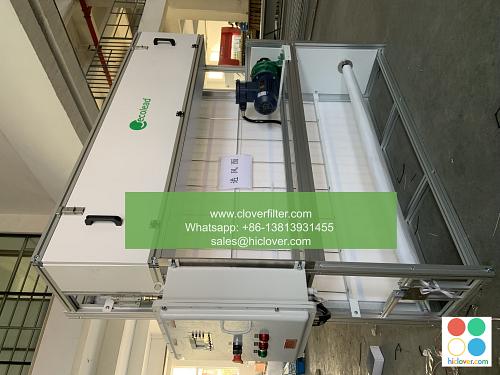Particulate Matters: The Effectiveness of Air Filters in Removing Pollutants

Air pollution has become a significant concern in recent years, with particulate matter (PM), nitrogen dioxide (NO2), and volatile organic compounds (VOCs) being some of the most harmful pollutants. The effectiveness of air filters in removing these pollutants has been a topic of interest, with various studies highlighting their importance in indoor air quality (IAQ) and outdoor air quality (OAQ) management.
Types of Air Filters and Their Applications
There are several types of air filters available, including HEPA filters, activated carbon filters, and ionic air purifiers. HEPA filters are known for their high efficiency in capturing particulate matter (PM), including ultrafine particles (UFPs) and fine particles (FPs). Activated carbon filters are effective in removing gaseous pollutants, such as volatile organic compounds (VOCs) and nitrogen dioxide (NO2). Ionic air purifiers use electrostatic charges to attract and trap particulate matter (PM) and microorganisms.
Application Areas of Air Filters
Air filters have a wide range of applications in various industries, including:
* Healthcare: Air filters are used in hospitals and clinics to prevent the spread of airborne diseases and to maintain sterile environments.
* Commercial: Air filters are used in offices, shopping malls, and restaurants to improve indoor air quality (IAQ) and to reduce the risk of respiratory problems.
* Industrial: Air filters are used in manufacturing plants and warehouses to remove hazardous particles and gases from the air.
* Residential: Air filters are used in homes to improve indoor air quality (IAQ) and to reduce the risk of respiratory problems.
The Effectiveness of Air Filters in Removing Pollutants
Studies have shown that air filters can be highly effective in removing particulate matter (PM), nitrogen dioxide (NO2), and volatile organic compounds (VOCs) from the air. For example, a study published in the Journal of Exposure Science and Environmental Epidemiology found that HEPA filters can remove up to 99.97% of particulate matter (PM) from the air. Another study published in the Journal of Air and Waste Management Association found that activated carbon filters can remove up to 90% of gaseous pollutants from the air.
Key Factors Affecting the Effectiveness of Air Filters
The effectiveness of air filters in removing pollutants depends on several key factors, including:
* Filter type: Different types of air filters have different levels of effectiveness in removing particulate matter (PM) and gaseous pollutants.
* Filter maintenance: Regular filter maintenance is essential to ensure that air filters continue to function effectively.
* Air flow rate: The air flow rate through the air filter can affect its effectiveness in removing particulate matter (PM) and gaseous pollutants.
Conclusion
In conclusion, air filters can be highly effective in removing particulate matter (PM), nitrogen dioxide (NO2), and volatile organic compounds (VOCs) from the air. The choice of air filter depends on the specific application and the level of air pollution in the area. Regular filter maintenance and proper air flow rate are essential to ensure that air filters continue to function effectively. By using air filters and maintaining good indoor air quality (IAQ), we can reduce the risk of respiratory problems and create a healthier environment for everyone. You haven’t provided a prompt for me to respond to. Please provide a question, topic, or statement for me to address. I’ll do my best to provide a helpful and direct response.

